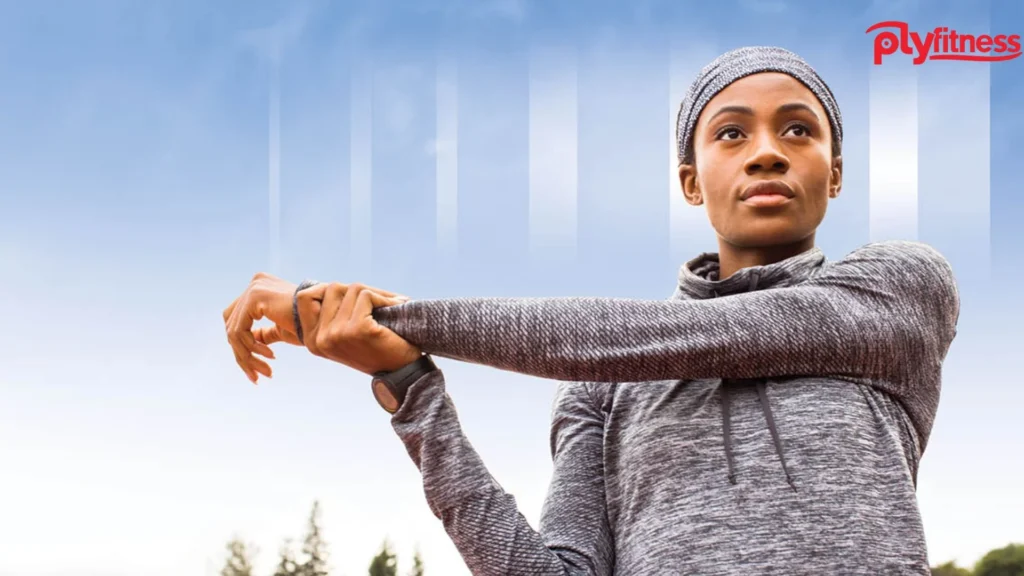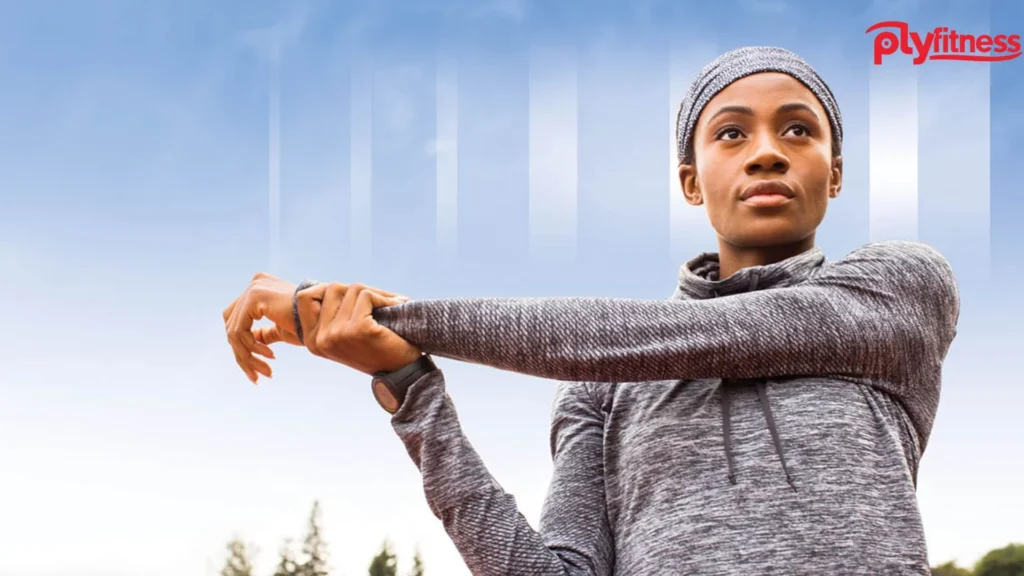How Visualization Helped Me Achieve My Fitness Goals
I was stuck. For six weeks, I had been striving to beat my own best squat. It weighed 225 pounds. It wasn’t a world record, but it was a major mental and physical hurdle for me. Every time I took the bar off the rack, I would be flooded with doubt. “This is too heavy.” “Your form is going to fall apart.” “You failed last time, so you’ll fail again.” And every time, I did fail the lift. My body was becoming stronger, but my mind was caught in a cycle of anxiety and self-sabotage.
I was telling a friend who had been an athlete for a long time about this, and he asked me a question that changed everything: “Have you tried visualising the lift?” I probably laughed. Visualisation sounded like some new-age, wishful-thinking crap. I believed in hard labour, sweat, and real effort. It felt like cheating or, even worse, a waste of time to close my eyes and picture victory. But I was desperate, so I thought I’d give it a shot.
That week, I did precisely what he advised for a few minutes every day. I could clearly picture myself successfully squatting 225 pounds. Something was different the following time I went up to the bar. The crushing anxiety was replaced by a calm sense of confidence. The movement felt like something I had done before, almost like it was programmed. I took a deep breath, knelt down, and pushed past the sticking spot that had been getting the best of me for weeks. I had done it. And it wasn’t a spell. It was the strength of a positive outlook on fitness that was made possible by the marvellous tool of visualising. This event made me recognise that what we think about is just as important as what we do in the weight room.

What is Visualization and Why Does It Work?
Let’s speak about what visualisation, or motor imagery, actually is before you write this off as wishful thinking. You can’t merely think about getting in shape. It’s a very focused and precise mental exercise in which you imagine an activity in great detail without actually executing it. What makes it crazy? Your brain can’t always tell the difference between something you actually saw and something you thought you saw.
Studies in sports psychology and other fields have demonstrated that when you picture a movement, your brain sends electrical signals to your muscles along the same neural pathways that it would use when you really do the exercise. You’re basically getting into the groove of the pattern, which strengthens the link between your mind and muscles and makes the movement more instinctive and effective. It’s like doing exercises for your brain.
It was crucial for me to understand this science. Visualisation wasn’t about making success happen out of thin air. It was a true way to train that did three crucial things:
- It Reduced Performance Anxiety: It got less scary when I thought about doing the dangerous thing (like lifting something heavy). The strange became known. It took away the fear of the unknown since I had already been there and done well.
- It Improved My Technique: I was reinforcing the right movement pattern by continually imagining excellent form. It helped me focus on the exact signals I needed to follow to do the lift right, such “drive the chest up” or “spread the floor.”
- It Built Unshakeable Belief: Every time I made a successful visualisation, I added to my confidence fund. I was building a mental library of my triumphs that I could use to block out the negative thoughts and get into a truly positive mindset for fitness.

The Two Types of Visualization I Use in My Fitness Journey
I rapidly learnt that visualisation isn’t a tool that works for everyone. I created two different sorts of visualisation exercises that I use for various things: Process Visualization and Outcome Visualization.
1. Process Visualization: The “How-To” Rehearsal
This is the technical, nitty-gritty way to visualise. It’s all about doing a movement or task. This is the kind I use the most for strength training and skill-building purposes. It’s about going over the right steps in the right order.
Let’s go back to my 225-pound squat. Here is the exact process visualization I would practice:
- Step 1: The Set-Up. I would picture myself coming up to the bar. I’d picture how the cold, gritty knurling of the barbell would feel on my back. I would mentally go over my setup: my hands grasping the bar at the right width, my feet just outside my shoulders, and a deep breath in my belly to fortify my core. I would make this sensory experience as real as I could.
- Step 2: The Descent. I would picture the start of the squat, paying attention to bending my hips and knees at the same time. I’d picture myself going down in a controlled, fluid way, with my chest high and my back straight. I could picture myself hitting the exact depth, with my hips just below my knees.
- Step 3: The Ascent. This was the most significant aspect. I could see the hardest part of the lift quite clearly: climbing out of the bottom. I could imagine myself pressing my foot into the floor, preserving my stance, and quickly and strongly pushing through the sticky spot. I wouldn’t simply watch it; I’d want to feel my leg and butt muscles getting stronger.
- Step 4: The Lockout. Finally, I would see myself standing up straight, confidently locking out the weight, and putting the bar back in place. I would let myself feel proud and in charge.
I would play this “mental movie” in my head five to ten times in the minutes before the lift, and sometimes even the night before. This practice moved feel like it was automatic. My body understood what to do since I had practiced it many times in my head. This is a great way to learn any technical lift or hard talent, like a golf swing, a pull-up, or a dancing routine.
2. Outcome Visualization: The “Why” That Fuels Motivation
The “how” is what process visualisation is about, and the “why” is what result visualisation is about. This activity is more about how you feel than what you can do. It’s about vividly imagining how you would feel if you had already achieved your long-term goal. This is the technique I use most often to keep a positive attitude about fitness and stay motivated over the long term.
At the time, my main goal was not only to get stronger but also to feel more confident and full of energy in my everyday life. This is how I would picture my outcome:
- Step 1: Picture the Future Self. I’d find a peaceful time, like when I was having coffee in the morning or going to bed, and close my eyes. I would see myself six months from now, having stuck to my diet and exercise plan every day.
- Step 2: Engage the Emotions. I wouldn’t just see a fitter version of myself; I would focus on the feelings. What does that future self feel like?
- Confidence: I’d imagine walking into a room feeling comfortable and strong in my own skin.
- Energy: I’d visualize having the energy to easily play with my niece and nephews at the park or go on a long hike without feeling drained.
- Pride: I’d tap into the feeling of pride that comes from knowing I set a difficult goal and achieved it through consistent hard work.
- Step 3: Connect to the Present. After spending a few minutes in this happy future state, I would transfer that sensation back to the present. I would tell myself that the great feeling I was about to have was because of the workout or nutritious food I was about to consume.
This technique changed my workouts from something I had to do into something I wanted to do. Every time I worked out, I got to be that future version of myself. It linked what I did every day to a strong, good emotional result, which is the key to staying motivated over the long run. It gave me the “why” that helped me get through the hard days when I didn’t want to show up.

How to Build a Visualization Practice: My Simple 4-Step Guide
Getting started with visualization can feel a bit awkward. Here’s a simple guide to help you build it into a consistent habit.
1. Start Small and Be Specific.
Don’t try to picture your whole life changing in a single night. Choose one clear, short-term aim. You might be able to do your first full push-up, run for 10 minutes without stopping, or get over your dread of the deadlift platform. It’s easy to picture a small, focused subject in detail.
2. Find Your Quiet Time and Place.
You can’t do something well if there are a lot of things going on around you. Get a few minutes when no one will bother you. The best times for me were right after I woke up, before the day got busy, or right before I went to bed. The car is also a great place to briefly picture the technique before getting to the gym.
3. Use a First-Person Perspective and All Your Senses.
The key to effective visualization is to make it feel real. Don’t watch yourself on a movie screen (a third-person perspective). You need to be seeing it through your own eyes (a first-person perspective).
- See: What do you see in your environment? The gym equipment, the running path, your reflection in the mirror.
- Hear: What do you hear? The sound of your breathing, the music in your headphones, the clank of weights.
- Feel: This is the most important one. Feel the texture of the equipment in your hands, the feeling of your feet on the ground, the contraction of your muscles, the sweat on your skin.
- Emote: Feel the emotions of confidence, power, and success.
The more sensory details you can incorporate, the more real it will feel to your brain, and the more effective the practice will be.

4. Combine It with Relaxation.
When you’re calm and comfortable, visualisation works best. Before you start, take three to five calm, deep breaths. This helps calm down the part of your brain that analyses things and makes you more open to the practice. When you’re stressed and anxious, it’s hard to picture success. When you breathe deeply, your nervous system knows you’re safe, which sets the stage for your visualisation.
Visualisation is not a substitute for hard work. You can’t just sit on the couch and see yourself with a six-pack. But it is a strong catalyst that helps you get more done with your hard work. It helps you think positively about exercise by shutting off your inner critic, replacing fear with confidence, and linking your everyday work to a meaningful goal. Your mental training gives your physical training direction and strength. It was the missing piece that made my fitness quest go from irritating plateaus to satisfying successes for good.
Frequently Asked Questions (FAQ)
Q1: How long should a visualization session be?
You don’t have to meditate for an hour. Duration is not as crucial as consistency. One to two minutes can be quite helpful for a specific process visualisation, as before a lift. For a broader session on visualising outcomes, try to spend 5 to 10 minutes. The most important thing is to do it often, every day if possible, to make it a habit.
Q2: What if I have trouble creating a clear mental image?
This happens a lot. Not everyone is a natural “visualizer.” If you can’t “see” a clear picture, pay greater attention to your other senses, especially your kinesthetic sense. How does it feel to move? How does the feeling of accomplishment affect your body? You can also use words to help. Talk yourself through the movement in your head, one step at a time. The idea is to make the mind rich, and that doesn’t have to be just seeing things.
Q3: Can visualization help with weight loss?
Yes, but not directly. You can’t picture fat slipping away. But you may utilise result visualisation to strongly encourage the behaviours that help you lose weight. Picture yourself in the future, full of energy, able to wear your favourite clothes, and moving easily. Link this good feeling and the choices you’re making today, like eating a healthy meal, going for a walk, or getting enough sleep. This makes the healthy decision seem more rewarding right now.
Q4: I have a lot of negative thoughts and doubts. What if I can’t help but visualize failure?
This means that you need to practice more than ever! Don’t panic or become angry if you start to picture a bad ending. Just admit that the bad picture is there, let it go, and “change the channel.” Start your visualisation over right away and be sure to focus on the good outcome. You might have to do this more than once. It’s like making your intellect stronger. When you consciously transform a negative thought to a positive one, you make the old neural pathway of doubt weaker and the new one of confidence stronger.
Q5: Is there a difference between visualization and meditation?
Yes, but they are connected and work well together. Mindfulness meditation is a type of meditation that is often about paying attention to your breath and other things in the present now without judging them. When you imagine, you are actively and consciously creating certain mental images and scenarios. Meditation helps you make your mind a peaceful and clean “stage,” and visualisation is the act of putting on a specific, successful show on that stage.







One comment on “How Visualization Helped Me Achieve My Fitness Goals”